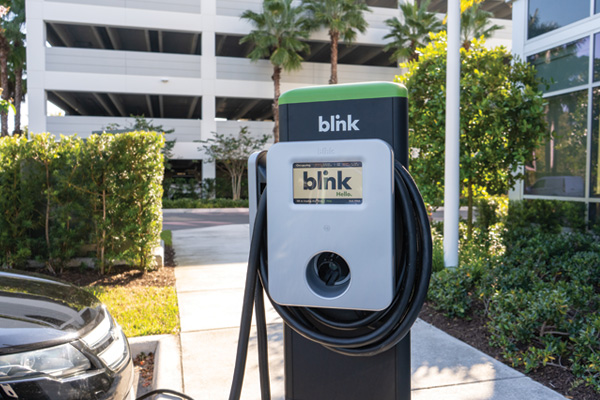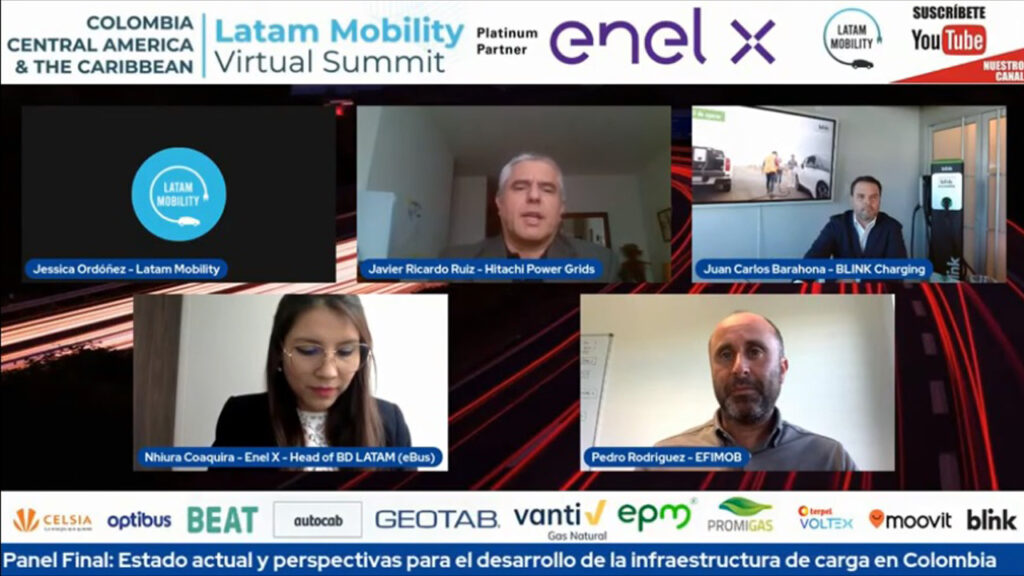With a fleet of electric buses that by 2022 will exceed 1,800 units and the ambition of the government and public sector that, by 2030, more than 600,000 VE will circulate in Colombia, the charging infrastructure is a key issue for the development of the electric mobility of the country.
That is why, during the sustainable mobility summit organized by Latam Mobility, a group of experts talked about various issues that involve the electric technology of the present and future, as well as the plans to diversify the charge of electric vehicles.
The discussion was loaded with speakers who contributed their knowledge, among which were: Pedro Rodriguez, EFIMOB manager, Javier Ricardo Ruiz Vargas – Head of Marketing & Sales at Hitachi Power Grids and Juan Carlos Barahona, Senior Director of Global Operations at Blink Charging , who gave their opinions under the moderation of Nhiura Coaquira, Head of Business Development Latam eBuses | e-City – Enel X.
These figures of electric mobility in Latin America, exposed important points about how to improve electrification in the region, starting from the great references worldwide to replicate ideas and generate solutions, as expressed by Rodríguez.
“The future of electric mobility is still a bit uncertain and needs will surely change progressively. In two years, they will probably not be the same as you have now, so it is important to have a partner that adapts to your needs and not the other way around ”
Pedro Rodriguez, manager of EFIMOB
The representative of Blink Charging, expressed the progress and projects that his company has carried out with respect to mobile chargers, one of the critical points for users of electric vehicles.
“Mobile chargers are important elements, which is why we at Blink have already addressed this point. It is a factor that generates enormous stress in people, running out of energy in the middle of the road. 200,000 users gave us their feedback to solve this problem. We grant this option so that vehicles, regardless of which they are, get the energy they need to move to a service station to recharge, ”said Barahona.
Juan Carlos added that to advance the management of the charging infrastructure, it is necessary to understand what the realities and capacities are in each territory to build a model that really encourages the adoption of electromobility among the different social actors. “You also have to take into account the experiences of other countries that are more mature, both in infrastructure design and legislation,” he said.

However, we are still facing projects that require greater acceptance by society, and to achieve that, Barahona affirms that the solution is to transform electromobility into a business that lasts over time. “What we need to do a sustainable business is that it adapts to the different social strata of each country.”
On the other hand, Ruíz Vargas affirmed that Hitachi Power Grids contributes with a great advance regarding public electric mobility, offering a solution to reduce waiting times and optimize trips. “We do a charge that is perhaps the fastest on the market, around 600 kilowatts in about 25 seconds.”
Thus, Latin America is advancing by leaps and bounds in terms of electrification, with Colombia being one of its main leaders in the generation of electromobility with more than 70 public charging points and at least 720 connections in homes and companies, so the block coincided in a only conclusion: “We must continue to contribute ideas to these projects that will undoubtedly become the mobility of the future.”



